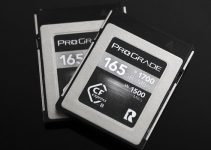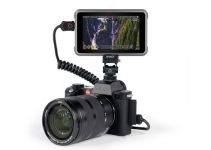To be honest, when it comes to RAM it all seems like a guessing game as to how much you actually need. Conventional wisdom is that more equals better, but for most of us with financial constraints we can’t just buy the newest Mac Pro with 1.5TB RAM and call it a day.
Balancing the cost of RAM against a faster CPU or more powerful graphics card is an important step in building a computer for video editing especially.
Stefan Malloch is here with some actual testing between some very common RAM options: 16GB, 32GB, and 64GB. Checking out the differences with Adobe Premiere Pro is going to be extremely useful the next time you need to upgrade your computer.
Kicking things off, Malloch gives a great description for what RAM does for you—it allows for better multitasking, smoother performance, and faster rendering. Laying out the basic specs we see an AMD Ryzen 7 2700X eight-core processor and an NVIDIA GeForce GTX 1080. He also uses DDR4 RAM and he is starting off with 16GB.
All the tests are the same settings with a 12 minute 4K file with a target bitrate of 110 Mb/s. Rendering this out with 16GB RAM took 33 minutes 47 seconds.
With 32GB things sped up to 30 minutes 41 seconds. Finally, 64GB took just 28 minutes 41 seconds. This shows it absolutely makes a difference.
Diving deeper into what we watched here you actually see the utilization charts of the components dropping notably with each RAM upgrade. Also, Malloch reported that the computer itself seemed to run a bit smoother with each upgrade – going back to the whole more RAM means better multitasking thing.
If you can go for the upgrade, you will see some performance boosts, though arguably better CPUs can help with this particular task even more than more RAM.
If you are looking for some new RAM or for your next PC build, you’ll want to keep in mind a few other things. One is to simply make sure you are using the best RAM for your setup. If your system supports faster DDR4 RAM, make sure you have that type of RAM. Using slower RAM will only hurt.
Also, this one is interesting, you will want to use fewer actual sticks of RAM if you can. Two 8GB sticks may perform slightly better than four 4GB sticks. Lastly, just make sure you aren’t running unnecessary programs in the background. All of this will eat into your RAM utilization and hurt performance for your main program.
Looking at these results, I wouldn’t be afraid to recommend a basic system with just 16GB RAM. Most MacBook Pros maxed out at this until quite recently. If you do expect to do some heavy work, then upgrading to 32GB makes sense. It is also good for future-proofing.
Everyday users generally won’t need to go up to 64GB. That is going to be for heavy-duty professional workstations or applications that will directly benefit from more RAM.
[source: Stefan Malloch]
Order Links:
Disclaimer: As an Amazon Associate partner and participant in B&H and Adorama Affiliate programmes, we earn a small comission from each purchase made through the affiliate links listed above at no additional cost to you.
Claim your copy of DAVINCI RESOLVE - SIMPLIFIED COURSE with 50% off! Get Instant Access!




